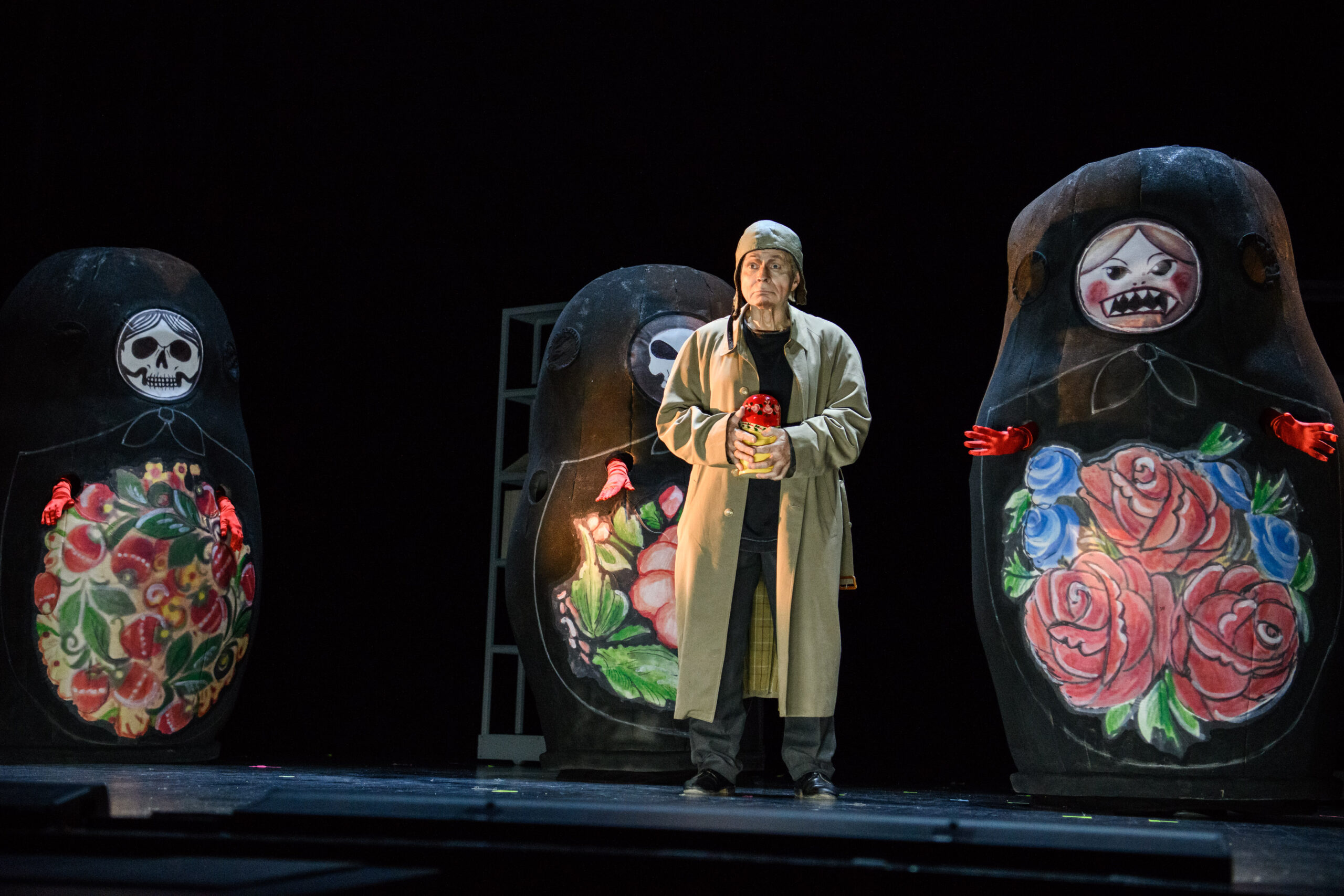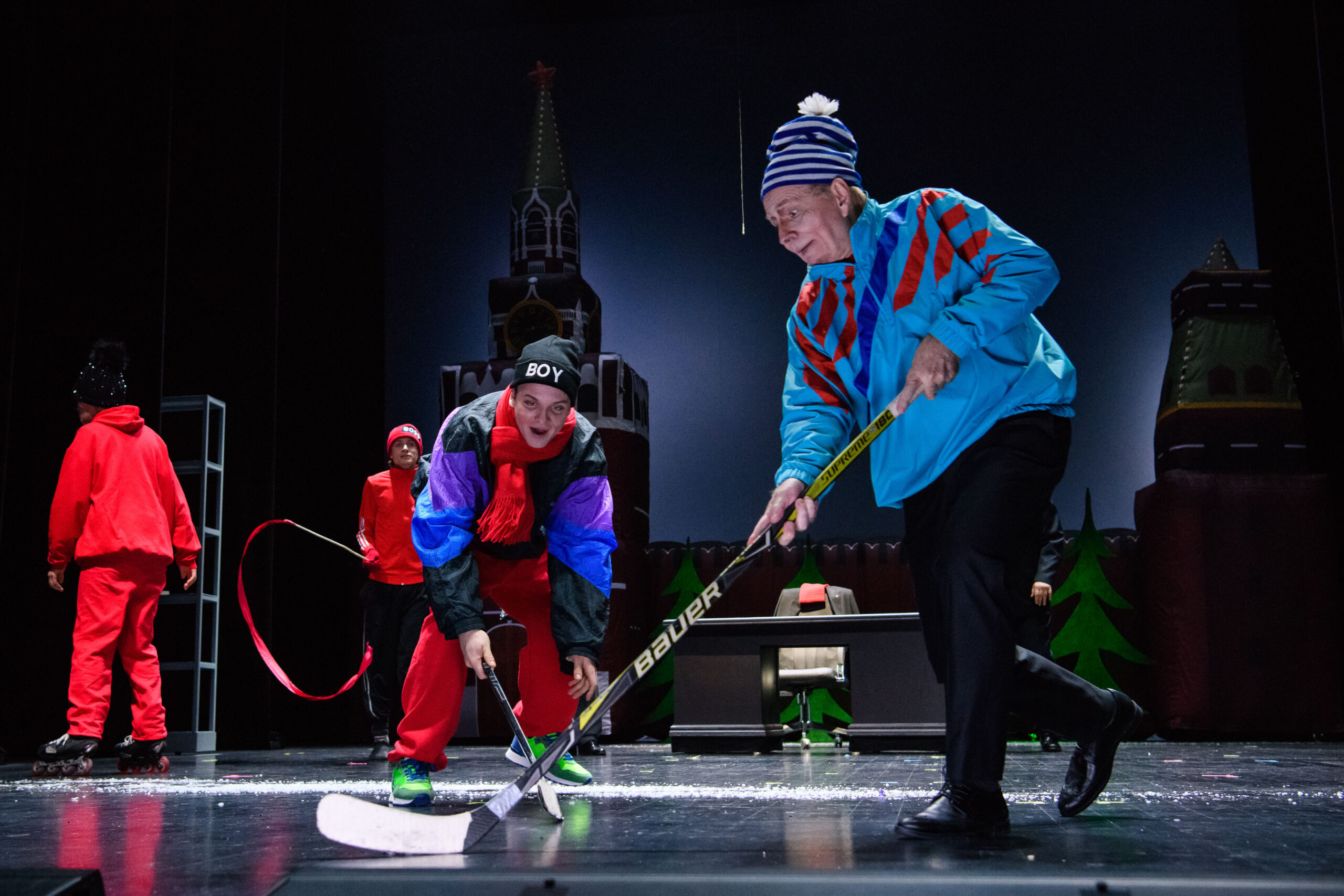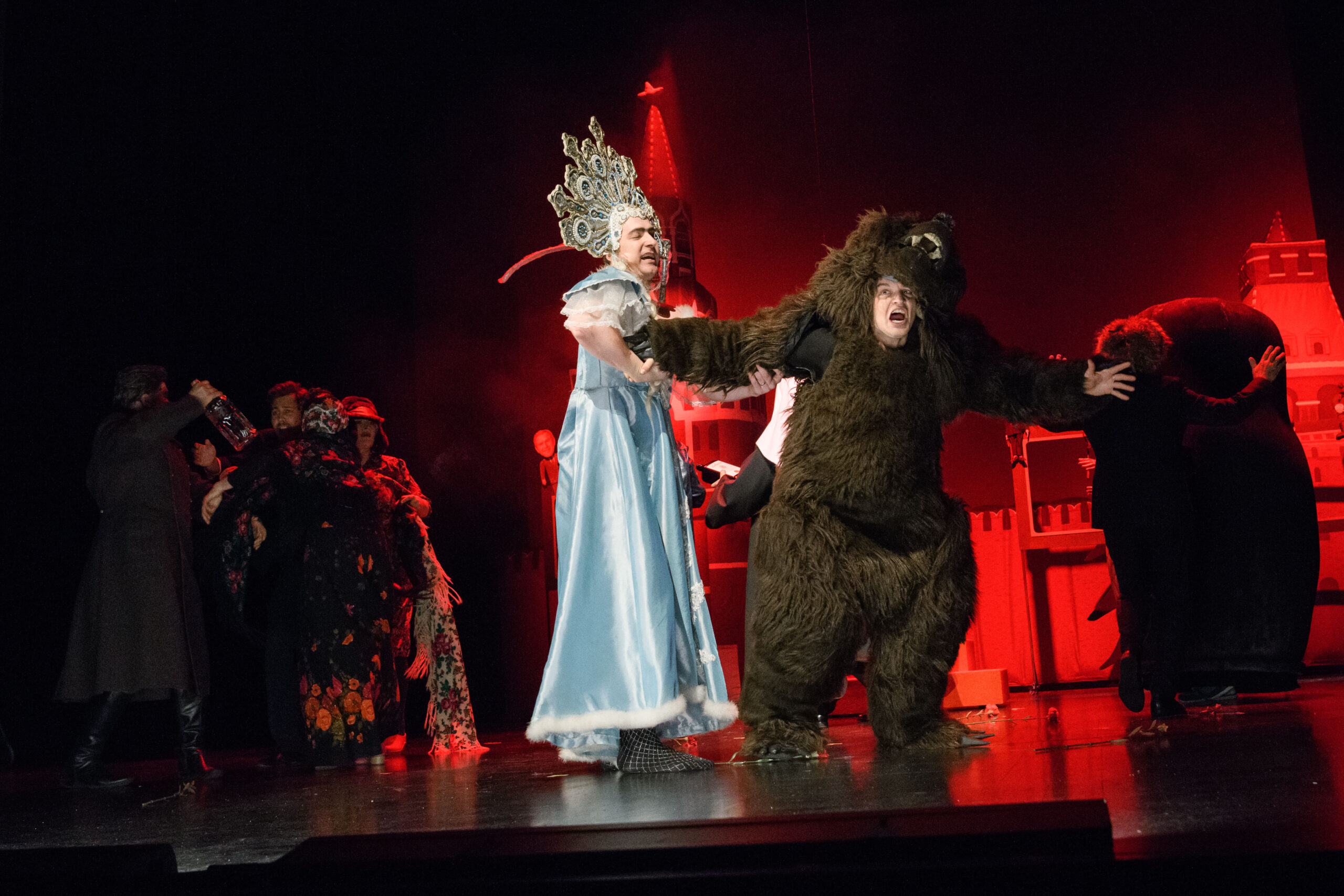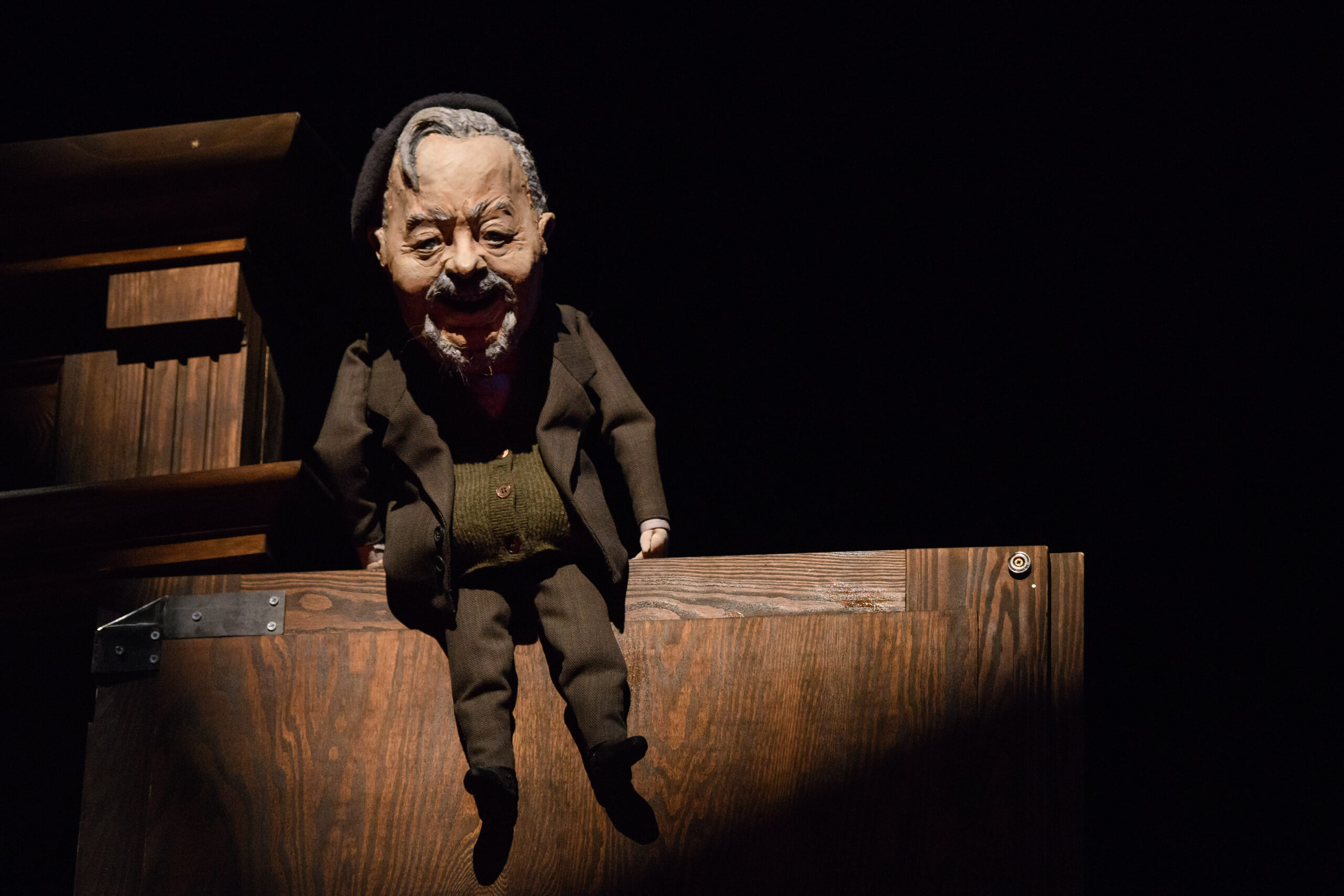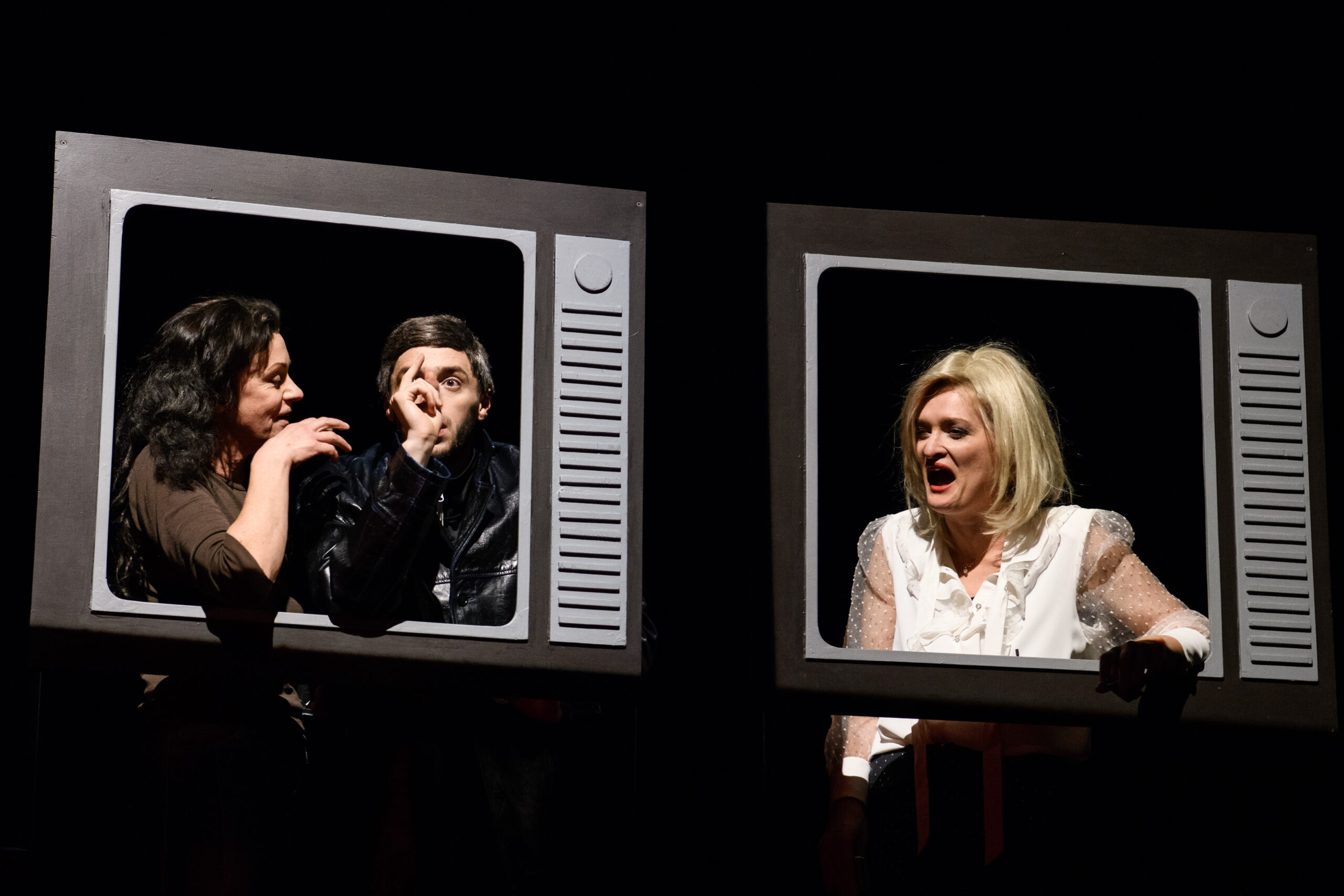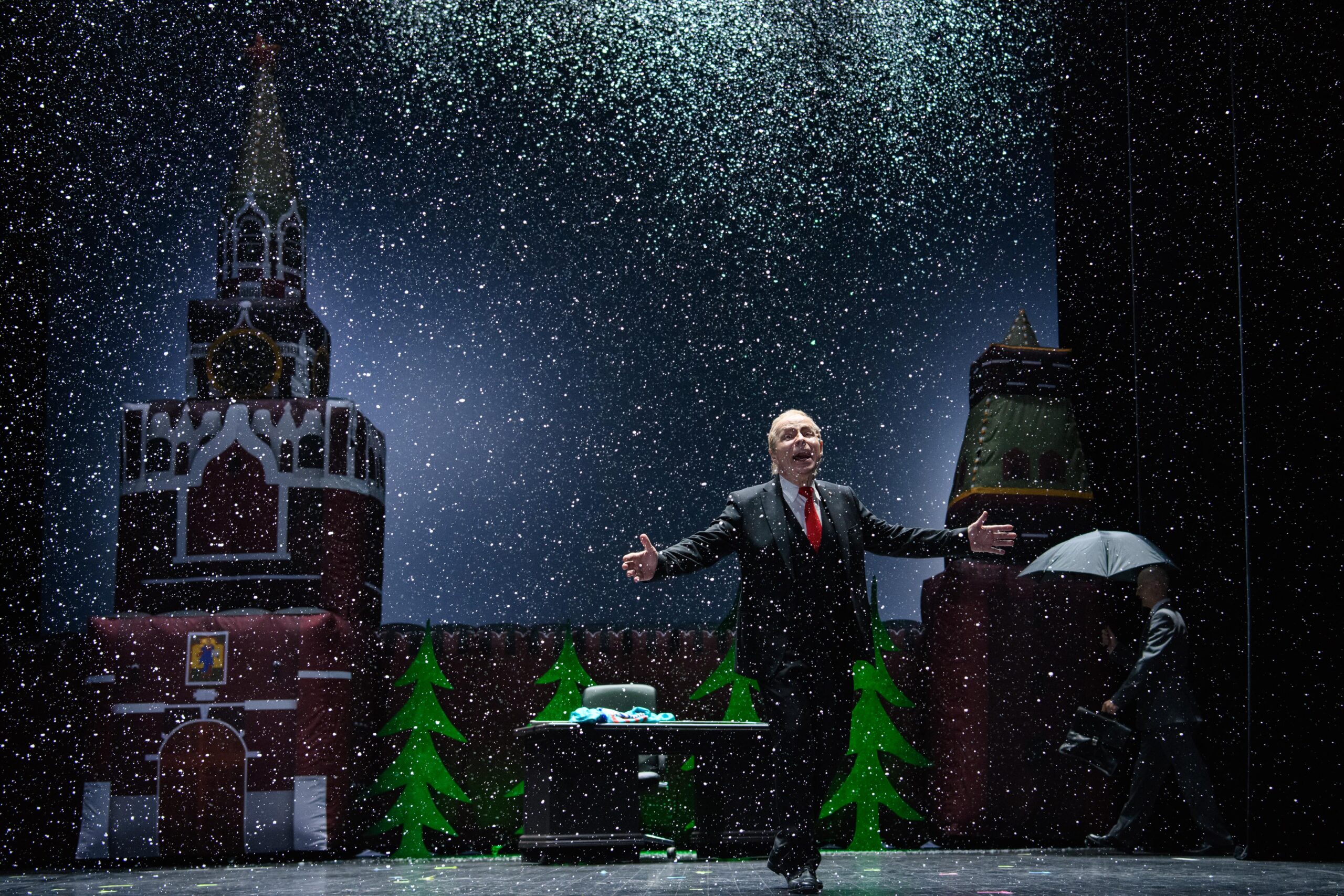The first premiere of the 59th season at the Youth Theatre, the production named Ubu the Czar, is director Gintaras Varnas’ original variation of his political “Šėpa” Theatre based on French writer Alfred Jarry’s play about Ubu. This play by Jarry, Ubu Roi, was written at the very end of the 19th century and gained enormous popularity. The character of Ubu became the harbinger of the era of the 20th century narcissist dictators. The loser Ubu’s buffoonish reality is inverse to the reality of the dictator-unleashed revolutions and wars, the protagonists of which sought not simply to change the world but to establish their own cults of personality.
Ubu is a typical Mediocrity, Nonentity. There is an interesting insight by André Breton, that Ubu is Sigmund Freud’s “the id” – “the it” (in opposition to “the ego”), a kind of average of the most primitive human part related to primal instincts – the pursuit of power, control, wealth and so on. At the same time, Ubu is a certain common denominator for a primitive who charms the masses. Perhaps this is precisely what the masses need, because his primitive personality is very close to them? Ubu is a phenomenon of a perfect conformist – like a chameleon he blends with the environment he finds himself in, and, if necessary, turns invisible. Doesn’t this remind you of the present Russian Czar? – asks the director of the production G. Varnas.
The production Ubu the Czar is an attempt by the director and the team of talented creators he has assembled to return to the genre of the political “Šėpa” Theatre which G. Varnas had revived during the times of our struggle for Independence, and through it to take a look at the reality of our present-day world.
Then, in 1988, G. Varnas, still a freshman, together with his fellow students revived the traditions of the “Šėpa” Theatre which went back to 1939 when the Polish student “Szopka Wileńska“ was functioning in Vilnius. The new “Šėpa” Theatre productions, which ran for just a few years, became an striking cultural and political phenomenon in our country. In their productions The Revolution Lullaby and The Communist Nostalgia each of the actors manipulated several puppets of politicians: on the top shelves of the “Šėpa” (or just the “Wardrobe”) would act the caricatures of Lenin, Stalin, Hitler, Dzerzhinsky, Gorbachev as they would fight with the figures of Landsbergis, Brazauskas, Prunskienė, Šepetys, Juozaitis and other statespeople of resurgent Lithuania. The whole action was being observed by the Angel and the Grim Reaper. The director G. Varnas recalls that the “Šėpa” Theatre ceased to exist, when our life changed, when our revolution of national liberation ended, when such theatre seemed to have lost its meaning. Later some people would say from time to time: “The “Šėpa” should be revived.” Even professor Irena Veisaitė tried a few times to talk me into doing it. But I never had a wish to start this again. Up until now, when I realized – such theatre, political cabaret – is wartime theatre…
